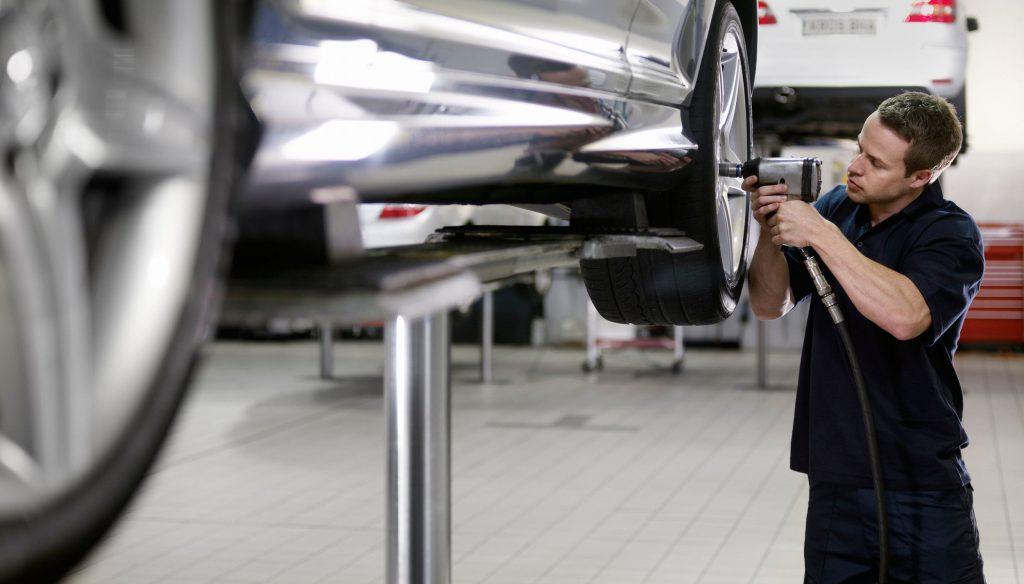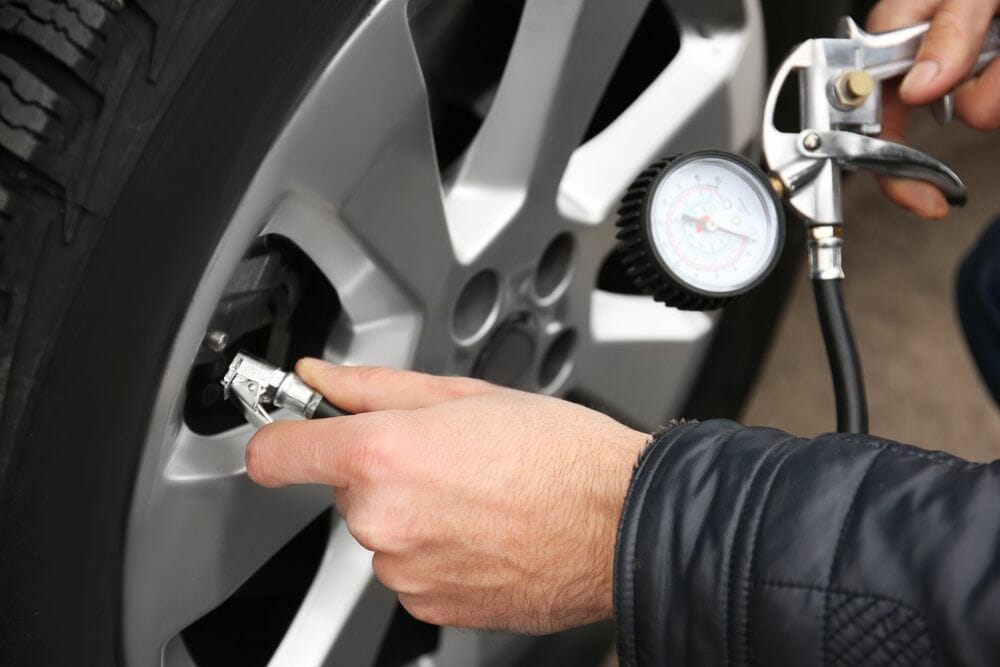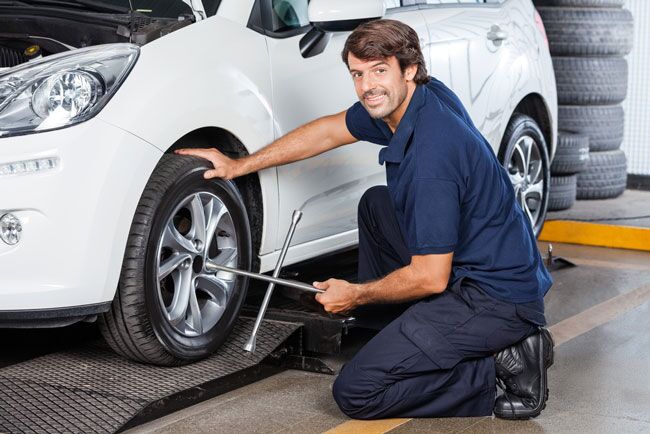Tire Talk: Understanding the Causes and Solutions for Womp Womp Noise
Womp Womp Noise in tires refers to a low-frequency noise that can be heard while driving. It is often described as a rhythmic thumping or thudding sound that becomes more pronounced as the vehicle’s speed increases. This noise can be quite annoying and can also indicate underlying issues with the tires or other components of the vehicle.
Addressing Womp Womp Noise is important for several reasons. Firstly, it can be a sign of tire wear or other mechanical problems that, if left unattended, can lead to more serious issues and potentially compromise the safety of the vehicle. Secondly, the noise itself can be quite distracting and uncomfortable for the driver and passengers, making for an unpleasant driving experience. Lastly, addressing Womp Womp Noise can help improve fuel efficiency and prolong the lifespan of the tires, saving the driver money in the long run.
Common Causes of Womp Womp Noise in Tires
There are several common causes of Womp Womp Noise in tires:
- Uneven tire wear: When the tires wear unevenly, it can lead to an imbalance in the tire’s rotation, causing the Womp Womp Noise. This uneven wear can be caused by factors such as improper tire rotation, misalignment, or suspension issues.
- Tire pressure issues: Incorrect tire pressure can also contribute to Womp Womp Noise. Underinflated tires can cause the tire to flex more than it should, leading to uneven wear and increased noise. On the other hand, overinflated tires can cause the center of the tread to wear faster than the edges, resulting in a similar noise.
- Wheel misalignment: When the wheels are not properly aligned, it can cause uneven tire wear and lead to Womp Womp Noise. Misalignment can occur due to hitting potholes or curbs, or simply over time as the suspension components wear out.
- Suspension problems: Issues with the suspension system, such as worn-out shocks or struts, can cause the tires to bounce or vibrate, resulting in Womp Womp Noise. These problems can be caused by normal wear and tear or by driving on rough roads.
- Tire age: As tires age, the rubber can harden and become less flexible, leading to increased noise. Additionally, older tires are more prone to uneven wear, which can also contribute to Womp Womp Noise.
Understanding Tire Tread Wear and Its Impact on Womp Womp Noise

Tire tread wear refers to the gradual wearing down of the tire’s tread pattern over time. There are different types of tire wear that can impact Womp Womp Noise:
- Cupping or scalloping: This type of wear appears as small, cup-shaped indentations on the tread surface. Cupping is often caused by suspension issues or imbalanced tires. It can lead to Womp Womp Noise as the uneven tread surface makes contact with the road.
- Feathering: Feathering occurs when the tread blocks on one side of the tire are worn down more than the other side, resulting in a feather-like pattern. This type of wear is often caused by misalignment or improper tire rotation. Feathering can contribute to Womp Womp Noise as the uneven tread surface interacts with the road.
- Center wear: Center wear happens when the center of the tire’s tread wears down faster than the edges. This type of wear is commonly seen in overinflated tires and can result in increased noise as the worn-down center section makes contact with the road.
To check for tire wear, it is important to regularly inspect the tread depth and look for any signs of uneven wear patterns. One common method is to use a penny and insert it into the tread groove with Lincoln’s head facing down. If the top of Lincoln’s head is visible, it indicates that the tire tread is worn and needs to be replaced. Additionally, running your hand across the tread surface can help identify any irregularities or uneven wear patterns.
How Tire Pressure Affects Womp Womp Noise
Proper tire pressure is crucial for maintaining optimal performance and reducing Womp Womp Noise. Both underinflation and overinflation can contribute to this noise:
- Underinflation: When a tire is underinflated, it does not have enough air pressure to maintain its shape and support the weight of the vehicle. This can cause the tire to flex excessively, leading to uneven wear and increased noise. Underinflated tires also have a larger contact patch with the road, which can amplify any irregularities in the tread surface, resulting in Womp Womp Noise.
- Overinflation: Overinflated tires have too much air pressure, causing the center of the tread to bulge outwards. This leads to increased wear in the center of the tire and reduced contact with the road on the edges. The uneven wear pattern can result in Womp Womp Noise as the worn-down center section makes contact with the road.
To check and maintain tire pressure, it is recommended to use a tire pressure gauge to measure the air pressure regularly. The correct tire pressure can usually be found in the vehicle’s owner’s manual or on a sticker located on the driver’s side door jamb. It is important to check tire pressure when the tires are cold, as driving can increase tire temperature and affect the readings. If necessary, add or release air from the tires to achieve the recommended pressure.
The Role of Wheel Alignment in Womp Womp Noise
Wheel alignment refers to the adjustment of the angles of the wheels so that they are parallel to each other and perpendicular to the ground. Proper wheel alignment is essential for reducing Womp Womp Noise:
- Misaligned wheels: When the wheels are not properly aligned, it can cause uneven tire wear and lead to Womp Womp Noise. Misalignment can occur due to hitting potholes or curbs, or simply over time as the suspension components wear out. When the wheels are misaligned, the tires may not roll straight and can develop uneven wear patterns, resulting in increased noise.
- Checking and adjusting wheel alignment: Wheel alignment should be checked regularly, especially after hitting a pothole or curb. Signs of misalignment include uneven tire wear, pulling to one side while driving, or a crooked steering wheel when driving straight. It is recommended to have the wheel alignment checked and adjusted by a professional at a reputable auto shop.
Suspension Issues and Their Connection to Womp Womp Noise
The suspension system of a vehicle plays a crucial role in providing a smooth and comfortable ride. However, when there are problems with the suspension, it can contribute to Womp Womp Noise:
- Suspension problems: Issues with the suspension system, such as worn-out shocks or struts, can cause the tires to bounce or vibrate, resulting in Womp Womp Noise. These problems can be caused by normal wear and tear or by driving on rough roads. When the suspension is not functioning properly, it can affect the tire’s contact with the road surface and lead to uneven wear and increased noise.
- Common suspension issues: Some common suspension issues that can contribute to Womp Womp Noise include worn-out shocks or struts, damaged or worn-out bushings, and broken or worn-out springs. These problems can affect the overall stability and performance of the vehicle and should be addressed promptly.
To address suspension problems, it is recommended to have the vehicle inspected by a qualified mechanic. They will be able to identify any issues with the suspension system and recommend the necessary repairs or replacements. Regular maintenance and inspections can help prevent suspension problems and reduce the likelihood of Womp Womp Noise.
Tire Age and Its Influence on Womp Womp Noise
The age of the tires can also impact Womp Womp Noise. As tires age, the rubber can harden and become less flexible, leading to increased noise:
- How tire age affects Womp Womp Noise: Over time, the rubber compounds in tires can deteriorate due to exposure to heat, sunlight, and other environmental factors. This can cause the rubber to harden and lose its ability to absorb road vibrations, resulting in increased noise. Additionally, older tires are more prone to uneven wear, which can also contribute to Womp Womp Noise.
- Signs of aging tires: There are several signs that indicate a tire is aging and may need to be replaced. These include cracks or bulges in the sidewall, tread separation, or a significant decrease in tread depth. It is important to regularly inspect the tires for any signs of aging and replace them as necessary.
When it comes to tire age, it is recommended to follow the manufacturer’s guidelines for tire replacement. Most experts recommend replacing tires every 6-10 years, regardless of tread depth. However, if there are signs of aging or significant wear before this timeframe, it is important to replace the tires sooner.
Tire Type and Womp Womp Noise: The Differences between Summer, Winter, and All-Season Tires
The type of tire used can also have an impact on Womp Womp Noise. Different tire types have different tread patterns and rubber compounds that can affect noise levels:
- Summer tires: Summer tires are designed for optimal performance in dry and wet conditions. They typically have a tread pattern that prioritizes grip and handling. While summer tires can provide excellent performance, they may produce more noise compared to other tire types due to their aggressive tread patterns.
- Winter tires: Winter tires are designed for optimal performance in cold weather, snow, and ice. They have a tread pattern with deep grooves and sipes that provide enhanced traction on slippery surfaces. Winter tires tend to have softer rubber compounds, which can help reduce noise levels. However, the aggressive tread pattern can still contribute to some level of Womp Womp Noise.
- All-season tires: All-season tires are designed to provide a balance of performance in various weather conditions. They have a tread pattern that is less aggressive compared to summer or winter tires, which can help reduce noise levels. All-season tires typically have a harder rubber compound compared to winter tires, which can also contribute to a quieter ride.
When choosing tires, it is important to consider the specific needs and driving conditions. If reducing Womp Womp Noise is a priority, opting for all-season tires with a quieter tread pattern and harder rubber compound may be the best choice.
Tips for Reducing or Eliminating Womp Womp Noise in Tires

There are several tips and practices that can help reduce or eliminate Womp Womp Noise in tires:
- Regular tire maintenance: Regularly inspecting the tires for signs of wear and maintaining proper tire pressure is crucial for reducing noise levels. This includes rotating the tires regularly to ensure even wear and replacing them when necessary.
- Proper tire inflation: Maintaining the correct tire pressure is essential for reducing Womp Womp Noise. It is recommended to check tire pressure regularly and adjust it as needed. This can help prevent uneven wear and ensure optimal performance.
- Wheel alignment and suspension checks: Having the wheel alignment checked regularly and addressing any suspension issues promptly can help reduce Womp Womp Noise. Proper alignment and functioning suspension components contribute to even tire wear and a smoother ride.
- Choosing the right tire type: Selecting tires with a quieter tread pattern and harder rubber compound can help reduce Womp Womp Noise. All-season tires are often a good choice for those looking for a balance of performance and noise reduction.
Conclusion: Maintaining Your Tires for a Quieter, Smoother Ride
In conclusion, Womp Womp Noise in tires can be caused by various factors, including uneven tire wear, tire pressure issues, wheel misalignment, suspension problems, and tire age. Addressing these issues is important for maintaining optimal performance, reducing noise levels, and ensuring a safe and comfortable driving experience.
Regular tire maintenance, including checking for wear and maintaining proper tire pressure, is crucial for reducing Womp Womp Noise. Additionally, having the wheel alignment checked regularly and addressing any suspension issues promptly can help minimize noise levels. Choosing the right tire type, such as all-season tires with a quieter tread pattern and harder rubber compound, can also contribute to a quieter and smoother ride.
By following these tips and practices, drivers can maintain their tires properly and enjoy a quieter, smoother driving experience. Regular maintenance and addressing any issues promptly can help prolong the lifespan of the tires, improve fuel efficiency, and ensure optimal performance on the road.
